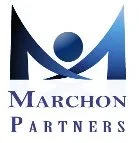
Adoption of cutting-edge technology and other new approaches to employee evaluations
The process of evaluating the overall performance of your employees is a critical aspect of personnel management, especially when you consider that many bottom-line aspects of your company's success will be contingent on workers' efficacy across all aspects of their job responsibilities. But whether traditional periodic performance reviews are the best form to adopt for such evaluations is not nearly as clear. According to the Society for Human Resource Management, a significant number of business leaders across many industries are becoming disenchanted with the long-observed protocol of performance reviews.
Plenty of employees also have little faith in reviews' ability to reward quality work and repudiate co-workers who are falling short of expectations. Your company can't afford to completely reject the idea of assessing staff in some way – the resultant lack of accountability would almost certainly cause some serious problems. But it may be high time to adopt a different approach to the situation that is both more effective than hidebound methods and more amenable to all involved.
Bringing new technologies to bear
The Washington Post reported last month that Walmart had adopted virtual reality as a radical new performance assessment method. Workers put on Oculus headsets that place them in environments like the ones they face every day and must demonstrate their facility with customer interactions as well as store and product knowledge essential to their specific jobs. The method is not standard operating procedure in all of the brick-and-mortar retail giant's stores yet, but 10,000 employees have used it to test their eligibility for promotions or raises thus far.
Not every business has the budget and resources at its disposal to opt for this specific method, of course. But that doesn't mean companies can't use technology to streamline and enhance the review process in less fancy ways. For example, Harvard Business Review noted that there are various apps and software platforms through which managers and HR personnel can provide employees with informal feedback on a more regular basis, and these can be more easily incorporated within a company's day-to-day operations.
Changing the timing of reviews
According to the same HBR piece referenced above, a handful of CEOs opted to kick annual performance reviews to the curb as far back as 2002. Back then, such a choice was utterly shocking; in the mid-to-late 2010s, doing so is much more common. Annual reviews, in particular, are increasingly viewed as unnecessary due to their emphasis on past performance as opposed to current behavior. Not dissimilarly, performance assessments that are tied to numerical scores or other rigidly constructed rubrics eliminate a lot of nuance from personnel evaluation – in a nutshell, they make more sense for machines than human beings.
Adjusting your personnel assessment practices to the benefit of employees and managers alike could be as simple as a change in format. Conducting more frequent evaluations in less formal settings (like one-on-one meetings over lunch) is one way to eliminate the stuffiness and pressure from reviews. Another is to conduct performance and salary reviews as separate processes, as explained by Stack Overflow: While both of those subjects are important, plenty of employees – especially those in IT and other specialized fields – will be more likely to speak honestly about their successes, failures and goals if they know that one false move won't potentially imperil their chances for a raise.
New structures for assessments
In some instances, it's not a performance review's existence or even frequency that's bothersome, but rather the rigid question-answer format, or the setup of such assessments as employees pleading their case for continued employment to supervisors (and HR representatives). So changing the structure could be just what your company needs to facilitate more effective personnel assessment.
In a guest blog post for Inc., Delphi Group founder Thomas Koulopoulos cites the "360 evaluation" as a successful alternative to annual reviews: In this format, employees are reviewed by their peers – specifically, everyone they work with on a regular basis. Those who will be doing the reviewing receive criteria and questions related to the specific role of the worker being assessed, and add their thoughts in an ongoing process. Offering incentives is a good way to ensure participation in this review format. Democratizing the process so that managers are reviewed by subordinates is also important.
The 360 model isn't right for every organization. Fortunately, there are plenty of alternative review structures to choose from. Google's method has employees create goal lists for themselves and tasks supervisors with tracking the process of achieving them, while Cargill Inc. encourages daily performance conversations between workers and managers, according to Fast Company. You shouldn't be afraid to try a number of different techniques to find the right one for your business.
Uncategorized
